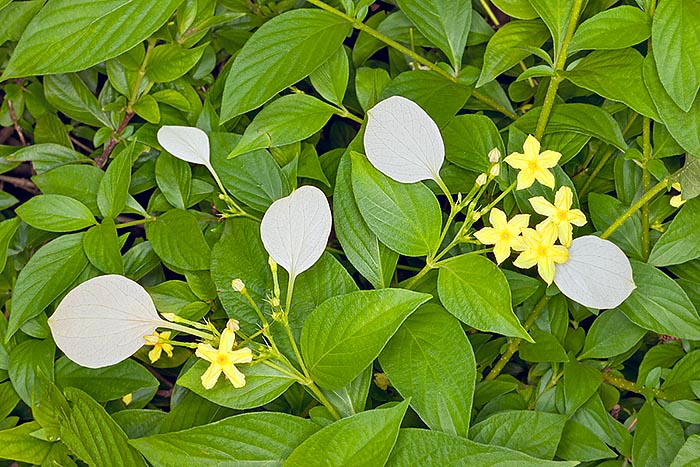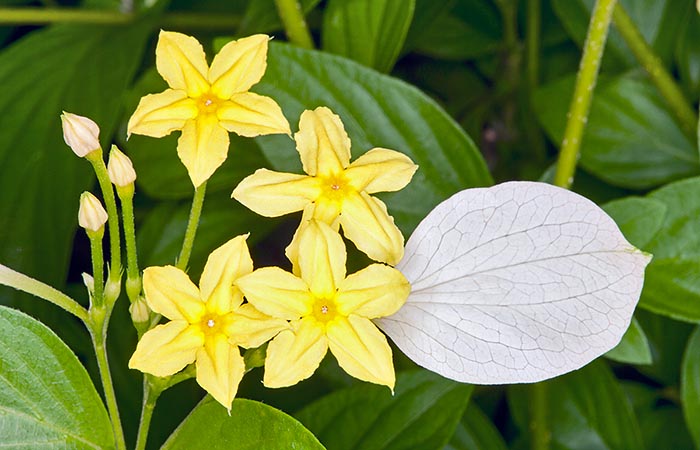Family : Rubiaceae

Text © Pietro Puccio

English translation by Mario Beltramini

Mussaenda sanderiana is a 1,5-3 m shrub at home in Thailand and Vietnam forests © Giuseppe Mazza
The species is native to Thailand and Vietnam where it grows in the humid forests up to about 1300 m of altitude.
The name of the genus comes from the term in Sinhala language “mussenda” with which are locally called some species belonging to the genus; the species is honoured to the famous German collector and nurseryman Henry Frederick Conrad Sander (1847-1920) who did work in England and in Belgium.
Common names: kaem khao (Thai).
The Mussaenda sanderiana Ridl. (1909) is an evergreen unarmed shrub or small tree, 1,5-3 m tall, with tomentose branches and subsessile leaves, simple, opposite, lanceolate with pointed apex, about 5-8 cm long and 2-3 cm broad. Panicle terminal inflorescences with calyx having five 0,5 cm long lobes, but one remarkably expanding to reach dimensions comparable to those of the leaves, of white colour, hypocrateriform corolla (corolla with stretched edges almost perpendicular to a long thin tube) of yellow colour with about 2 cm long corolline tube and five 0,6 cm long and 0,3 cm broad lobes.

The 2-3 cm yellow starry flowers have one expanded white lobe of the calyx of a leaf size © Giuseppe Mazza
The fruit is a globose berry containing numerous seeds.
It reproduces by seed, in sandy organic loam maintained humid at the temperature of 22-24 °C, by cutting and by air layering.
Little diffused species despite the undoubted ornamental value, cultivable in the tropical and subtropical humid climate zones in slightly shaded position on soils rich of humus and perfectly draining.
Where the climate does not allow the permanence in open air during the coldest months, it can be cultivated in pot in order to be sheltered in luminous location, utilizing loam rich of organic substance with addition of coarse siliceous sand or agri-perlite per a 30%, with winter diurnal temperatures of 20-24 °C and lowest night values not under the 16 °C. The watering must be regular and abundant in summer, but without stagnations, more spaced in winter, allowing the superficial layer of the substratum to partially dry up before giving water again, with fertilizations done preferably with slow-release balanced products with addition of microelements.
→ To appreciate the biodiversity within the RUBIACEAE family please click here.
